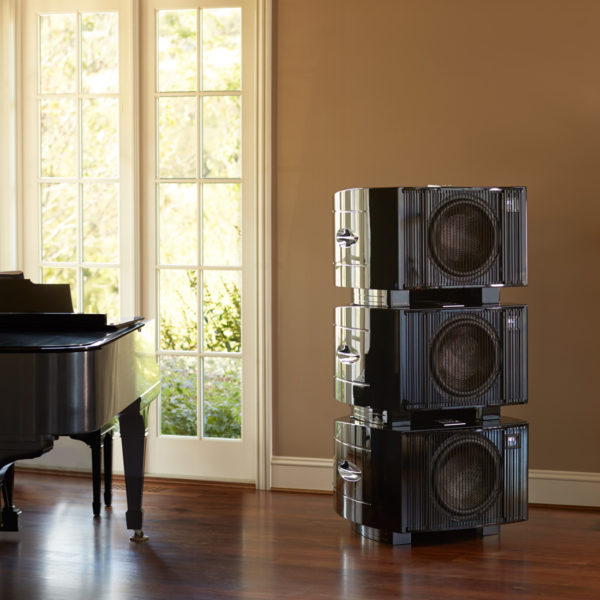Hi all,
I've built several pairs of Ripol subs in recent years, and I’m currently building the pair shown below for a friend. These are the smallest, most compact ones I’ve ever built with 12 inch woofers (Peerless SLS). I think my friend will like the compact size!
The woofer cabs are 3/4 red oak plywood with oak edge members inserted and rounded over, which looks much better than exposed plywood edges but is a LOT MORE work. The center section is solid brown oak, indexed to the cabs with oak dowel pins. The cabs and center section are held together with all-thread rods and cap nuts.
The light-colored oak cabs will be oil stained with a mixture of 1/3 golden oak, 2/3 natural, and a bit of powdered turmeric root added for a yellowish tint. The darker oak center section will be oil stained with red oak, for contrast. The finish will be sprayed-on coats of clear satin polyurethane with a #320 sanding step between coats.
More to come but for now; enjoy the build pics.
Below: Rabbit cut plywood cab pieces self-locate for gluing.

Below: Woofer cab glued and clamped.

Below: Cab edges were notched on the table saw to accept the oak edge members.

Below: Red oak edge members held in place with painter’s tape while the glue sets.

Below: Cab with mitered edge members glued in.

Below: Completed cabs and center section disassembled.

Below: Rear view assembled with edges rounded to 3/8” radius on a router table.

Below: Front view / ready for stain & satin clear coat.

Stay tuned... more to come!
I've built several pairs of Ripol subs in recent years, and I’m currently building the pair shown below for a friend. These are the smallest, most compact ones I’ve ever built with 12 inch woofers (Peerless SLS). I think my friend will like the compact size!
The woofer cabs are 3/4 red oak plywood with oak edge members inserted and rounded over, which looks much better than exposed plywood edges but is a LOT MORE work. The center section is solid brown oak, indexed to the cabs with oak dowel pins. The cabs and center section are held together with all-thread rods and cap nuts.
The light-colored oak cabs will be oil stained with a mixture of 1/3 golden oak, 2/3 natural, and a bit of powdered turmeric root added for a yellowish tint. The darker oak center section will be oil stained with red oak, for contrast. The finish will be sprayed-on coats of clear satin polyurethane with a #320 sanding step between coats.
More to come but for now; enjoy the build pics.
Below: Rabbit cut plywood cab pieces self-locate for gluing.
Below: Woofer cab glued and clamped.
Below: Cab edges were notched on the table saw to accept the oak edge members.
Below: Red oak edge members held in place with painter’s tape while the glue sets.
Below: Cab with mitered edge members glued in.
Below: Completed cabs and center section disassembled.
Below: Rear view assembled with edges rounded to 3/8” radius on a router table.
Below: Front view / ready for stain & satin clear coat.
Stay tuned... more to come!




